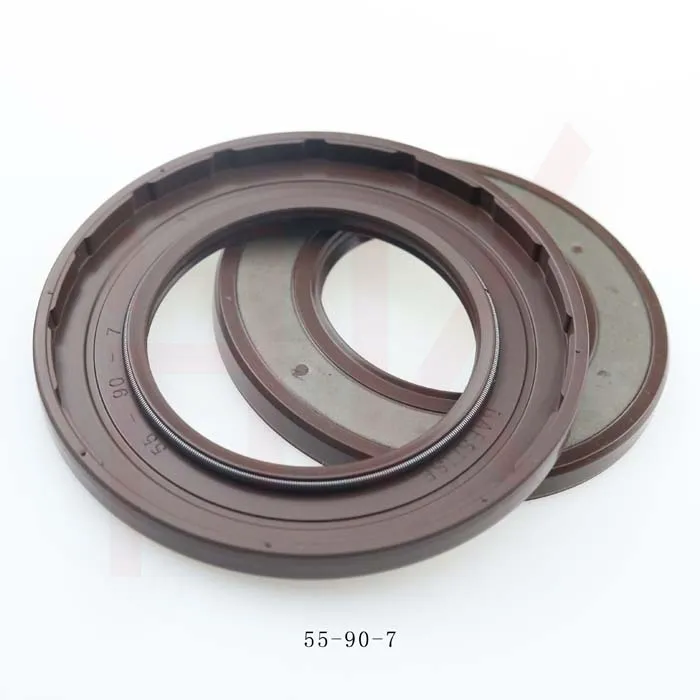Nov . 09, 2024 19:04 Back to list
Exploring the Benefits and Variability of Hydraulic Cylinder Seals in Industrial Applications
Understanding Hydraulic Cylinder Seals A Comprehensive Overview
Hydraulic systems are crucial in many industrial applications, providing the necessary power to operate machinery and equipment efficiently. At the heart of these systems are hydraulic cylinders, which convert hydraulic energy into mechanical energy. However, the performance and longevity of hydraulic cylinders heavily depend on the effectiveness of their seals. This article delves into the importance of hydraulic cylinder seals, their types, materials, and maintenance practices.
The Importance of Hydraulic Cylinder Seals
Hydraulic cylinder seals are designed to prevent any fluid leakage between the moving parts of the cylinder. They serve several crucial functions
1. Fluid Containment Seals keep hydraulic fluid within the cylinder, maintaining pressure and ensuring the proper functioning of the system. Any leakage can lead to decreased performance, increased wear, and potential system failure.
2. Contamination Prevention Seals help prevent dirt, dust, and other contaminants from entering the hydraulic system. Contaminants can cause damage to the internal surfaces of the cylinder and degrade the fluid quality.
3. Support for Movement Seals provide support for the piston as it moves inside the cylinder, allowing for smooth and efficient operation. Proper sealing reduces friction and wear, extending the life of the hydraulic components.
Types of Hydraulic Cylinder Seals
There are several types of seals used in hydraulic cylinders, each serving a specific purpose
1. Rod Seals These seals are located at the outer end of the cylinder, around the piston rod. Rod seals prevent hydraulic fluid from leaking out of the cylinder while keeping contaminants at bay. They are typically subjected to dynamic loads and are designed to handle substantial pressure.
2. Piston Seals Piston seals are found inside the cylinder, sealing the space between the piston and the cylinder wall. They are crucial for maintaining the pressure differential needed for the cylinder to function correctly. Piston seals are subjected to high pressures and are designed to provide a tight seal even under extreme conditions.
3. Buffer Seals These seals act as an additional layer of protection, preventing any blow-by of the hydraulic fluid. They are often used in conjunction with rod or piston seals to enhance the sealing performance, particularly in demanding applications.
hyd cylinder seals

4. Wiper Seals Wiper seals are designed to remove any contaminants from the piston rod as it exits the cylinder. They prevent dirt and debris from entering the hydraulic system, thus protecting the internal components from wear and damage.
Materials Used for Hydraulic Cylinder Seals
The materials used for hydraulic cylinder seals can significantly influence their performance and lifespan. Common materials include
1. Nitrile Rubber (NBR) This is the most widely used material for hydraulic seals due to its excellent compatibility with a variety of hydraulic fluids and resistance to wear.
2. Polyurethane Known for its robustness, polyurethane seals can withstand high pressures and provide a longer lifespan in harsh operating conditions.
3. Fluorocarbon (FKM) This is a high-performance material that is resistant to extreme temperatures and aggressive hydraulic fluids. It is often used in applications involving high heat or corrosive environments.
Maintenance Practices for Hydraulic Cylinder Seals
To ensure the longevity and effectiveness of hydraulic cylinder seals, regular maintenance practices should be implemented
1. Routine Inspections Regular inspections can help identify any signs of wear or leakage. Early detection can prevent more extensive damage and costly repairs.
2. Fluid Quality Monitoring Maintaining high-quality hydraulic fluid is crucial. Regularly check and replace fluid to prevent contamination and degradation, which can adversely affect seal performance.
3. Proper Installation Ensuring that seals are correctly installed is key to their performance. Follow manufacturer guidelines and use the appropriate tools to avoid damage during installation.
In conclusion, hydraulic cylinder seals are vital components that ensure the efficient operation of hydraulic systems. By understanding their types, materials, and maintenance practices, operators can enhance the performance and longevity of their hydraulic equipment. Regular attention to seal health not only improves operational efficiency but also reduces downtime and overall maintenance costs.
-
TCN Oil Seal Metal Ring Reinforcement for Heavy Machinery
NewsJul.25,2025
-
Rotary Lip Seal Spring-Loaded Design for High-Speed Applications
NewsJul.25,2025
-
Hydraulic Cylinder Seals Polyurethane Material for High-Impact Jobs
NewsJul.25,2025
-
High Pressure Oil Seal Polyurethane Coating Wear Resistance
NewsJul.25,2025
-
Dust Proof Seal Double Lip Design for Construction Equipment
NewsJul.25,2025
-
Hub Seal Polyurethane Wear Resistance in Agricultural Vehicles
NewsJul.25,2025
-
The Trans-formative Journey of Wheel Hub Oil Seals
NewsJun.06,2025
Products categories
















